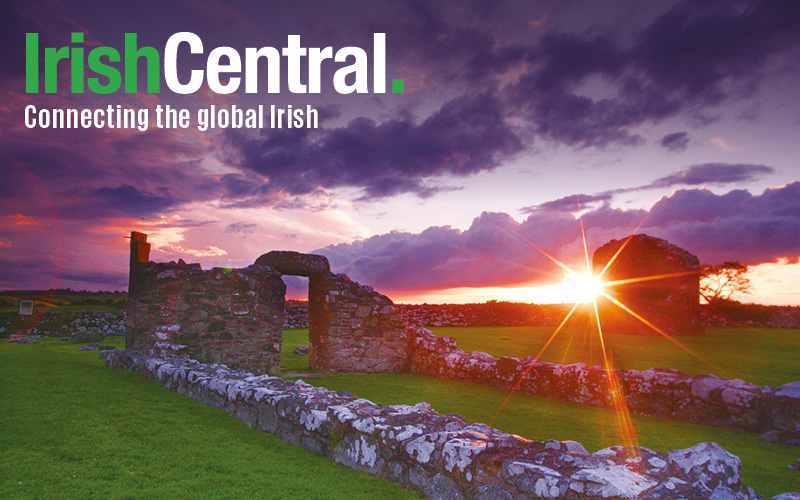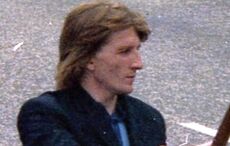Ireland’s abandoned equine issue has reached crisis level. With thousands of unwanted and unregulated horses roaming the Isle and being easily targeted by unscrupulous meat processing practitioners, it begs the question: have abandoned Irish horses entered the food chain? And, more importantly, have those horses contained bute (phenylbutazone)? Bute causes cancer in humans.
While horses are only accepted into the human food chain with "clean" passports – that is having had no prohibited medications like the horse painkiller drug bute, it is difficult to confirm that Irish horses, which have been slaughtered for human consumption, had the required “clean” passport.
Irish horses do not wear ear tags, individually identifying them, which makes their “passport” history questionable. Joseph A. Collins et al., while doing research on Irish equine welfare, claimed, “Dealers openly admitted that they did not necessarily seek horse identification documents (in contravention of the law) when sourcing horses as they could apply to a Horse Passport Issuing Authority of their choice for a new set.”)
Last year Stephen Philpott, spokesperson for the Ulster Society for the Prevention of Cruelty to Animals (USPCA) stated, "Hundreds of unwanted horses are being rounded up and sold into the food chain using false paperwork. We have been following lorry loads of horses to abattoirs in Ireland, Britain and Europe for months now. We have watched abattoirs being opened up late at night so people can deliver lorry loads of horses and have them slaughtered in the middle of the night.” And, several days ago, British MP, Mary Creagh, reported that she “..... is in receipt of evidence showing that several horses slaughtered in UK abattoirs last year tested positive for phenylbutazone, or bute. It is possible that those animals entered the human food chain."
While the issue of illegal horse meat processing needs to be addressed, it seems that the underlying deeper issue that is culminating into this crisis is Ireland’s unregulated and overpopulation of equidae. As a result of the Celtic Tiger, Ireland’s equine ownership increased to the highest horse population per capita in Europe. During the boom, the horse, along with a golf club membership, a Mercedes Benz, and a sprawling house, became a symbol of status. Thousands of horses were purchased, some as pets, and some for racing. Ordinary farm lands were acquired as stud farms, and breeders turned out thoroughbreds that fetched as much as €1 million. The number of registered foals shot up 40 per cent between the years 2000 and 2007.
However, when the global recession hit, the sale price of horses plummeted. Top-class thoroughbreds sold for as little as €300,000, and non-thoroughbreds became almost worthless. According to Seán MacConnell of the Irish Times, “Horses have become so devalued in Dublin they have been swapped for a mobile phone…..”
The low sale price coupled with the cost of upkeep made the horse a liability for many cash-strapped owners. They faced a conundrum: keep a horse they couldn’t afford to feed, stable, and provide veterinary care for, or abandon it. Many owners chose abandonment, evidence of which quickly became widespread throughout the island. For example, 70 horses were rescued from appalling conditions at an Antrim farm. “The horses were confined in a tarmac yard and left wallowing in two feet of their own mess. It was unable to drain. It was saturated. There was not a blade of grass on it," charity spokesperson David Wilson told U Television. This was the largest equine rescue operation in the 174-year long history of the USPCA, who had to call in other organizations to assist in the effort.
At Dunsink, a former landfill near Dublin, 86 horses were abandoned in the winter and left to starve. When the horses were rescued by The Dublin Society for Prevention of Cruelty to Animals (DSPCA) in the spring, many had to be put down. Twenty-seven were removed to the pound and 14 were found dead. DSPCA said that they “have encountered equine dying in horrific pain and numerous dead horses decomposing all round Dublin. Some dying and dead horses have been simply dumped by their owners, dragged from trailers or horse boxes and left so that the owner won't have to deal with veterinary costs or the risk of prosecution.” DSPCA claims that it noticed a direct increase in numbers of abandoned horses following fairs such as the one in Smithfield, which is unlicensed and unregulated. “Markets like the one in Smithfield means anyone can easily buy equine for as cheap at €8, irrespective of a person's lack of resources and knowledge of equine care.”
To make matters worse, Irish animal welfare societies are unable to cope with the tremendous number of abandoned horses. Welfare experts estimate that since the collapse of the Celtic Tiger, as many as 20,000 horses have been abandoned. "We have a huge problem," said Conor Dowling, an inspector for the Irish Society for the Prevention of Cruelty to Animals (ISPCA). ISPCA has seen a several-fold increase in the numbers of equine related calls and the numbers of animals taken into care in recent years.
The first step to solving this equine issue some suggest is a cull. "Horse slaughter is a contentious issue for horse people because in Ireland we have a tremendous affinity with the horse. Unfortunately, there may not be a more practical solution," said James Murphy, of the Irish Farmers' Association to the Irish Times.
But, ultimately, to eliminate the likelihood of horse meat and, more importantly, tainted horse meat from the Irish food chain, experts purport that a central system of governance -- a comprehensive, integrated system for the registration, identification and tracing of equidae in Ireland -- is required.




Comments